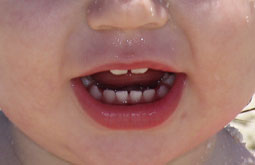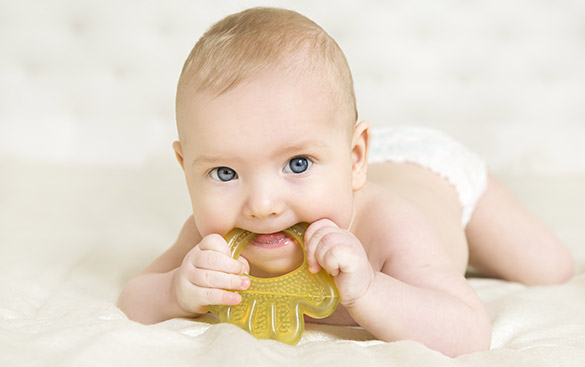What is teething?
Teething, the emergence of the first teeth through a baby’s gums, can be a frustrating time for little ones and their parents. But knowing what to expect during teething and how to make the process a little less painful can help you manage.
So Much Pain for Such Small Teeth
Teething can begin at around 3 months old but typically begins when your child is 6 to 7 months old.

Signs of teething may include:
- Excessive drooling
- Irritability
- “Gumming” or biting
- Appearance of a rash around the mouth, or on the face
- Decrease in appetite
- Excessive crying
- Loss of appetite
- Feverish
- Changes in bowel movements

Here are some tips to keep in mind when your baby is teething:
- Wipe your baby’s face often with a cloth to remove the drool and prevent rashes from developing.
- Give your baby something to chew on. Make sure it’s big enough so that it can’t be swallowed and that it can’t break into small pieces. A wet washcloth placed in the freezer for 30 minutes makes a handy teething aid — just be sure to wash it after each use. Rubber teething rings are also good, but avoid ones with liquid inside because they may break or leak. If you use a teething ring, be sure to take it out of the freezer before it becomes rock hard — you don’t want to bruise those already swollen gums!
- Rub your baby’s gums with a clean finger.
- Never tie a teething ring around a baby’s neck — it could get caught on something and strangle the baby.
- If your baby seems irritable, ask your doctor if it is okay to give a dose of acetaminophen or ibuprofen (for babies older than 6 months) to ease discomfort. Never place an aspirin against the tooth, and don’t rub alcohol on your baby’s gums.
- Talk to your doctor or dentist before using over-the-counter pain reducers or desensitizing gel.





